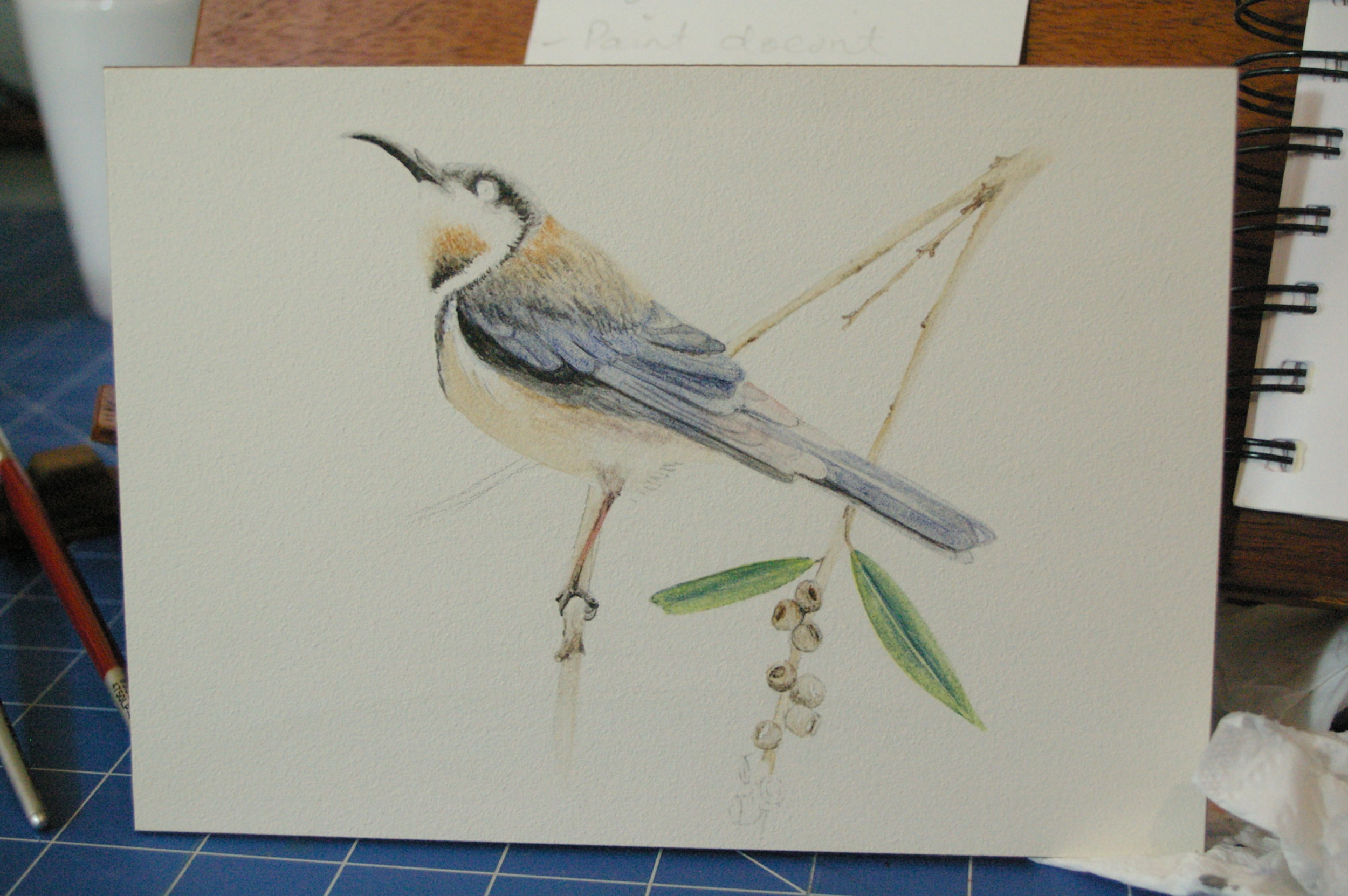I was asked to road test some Ampersand Aquabord, a clay-coated panel for watercolour that claims to be acid-free and archival. I thought I might share my experience working on it.
I am used to working on 300gsm hot pressed paper which is very smooth, I found I had to adjust the way I worked on the Aquabord, the clay surface as you would expect behaves rather differently.
The panel surface has some texture to it and required wetting out before you commence painting to release any air bubbles trapped under the surface.
I found my paint brush traveled quite smoothly over the surface of the board.
The paint tended to sit on the surface and did not behave like it would on paper. Where paint is drawn away and may spread as it absorbs into paper, on the Aquabord it does not. This makes you apply the paint differently on the Aquabord. The fact that the paint sits on the surface means you can push it around quite a lot even after its dry. It is quite easy to build up layers of colours and you get great vibrancy of colour.
The nature of the surface also allows for amazing lift out. You can remove layers of paint to expose colours underneath or lift out back to the white of the board. This would be great for highlights and details like leaf veins. (see pics)
Being a board product no stretching or flattening is required as it is with paper.
Check it out, it's always fun to try something new.































